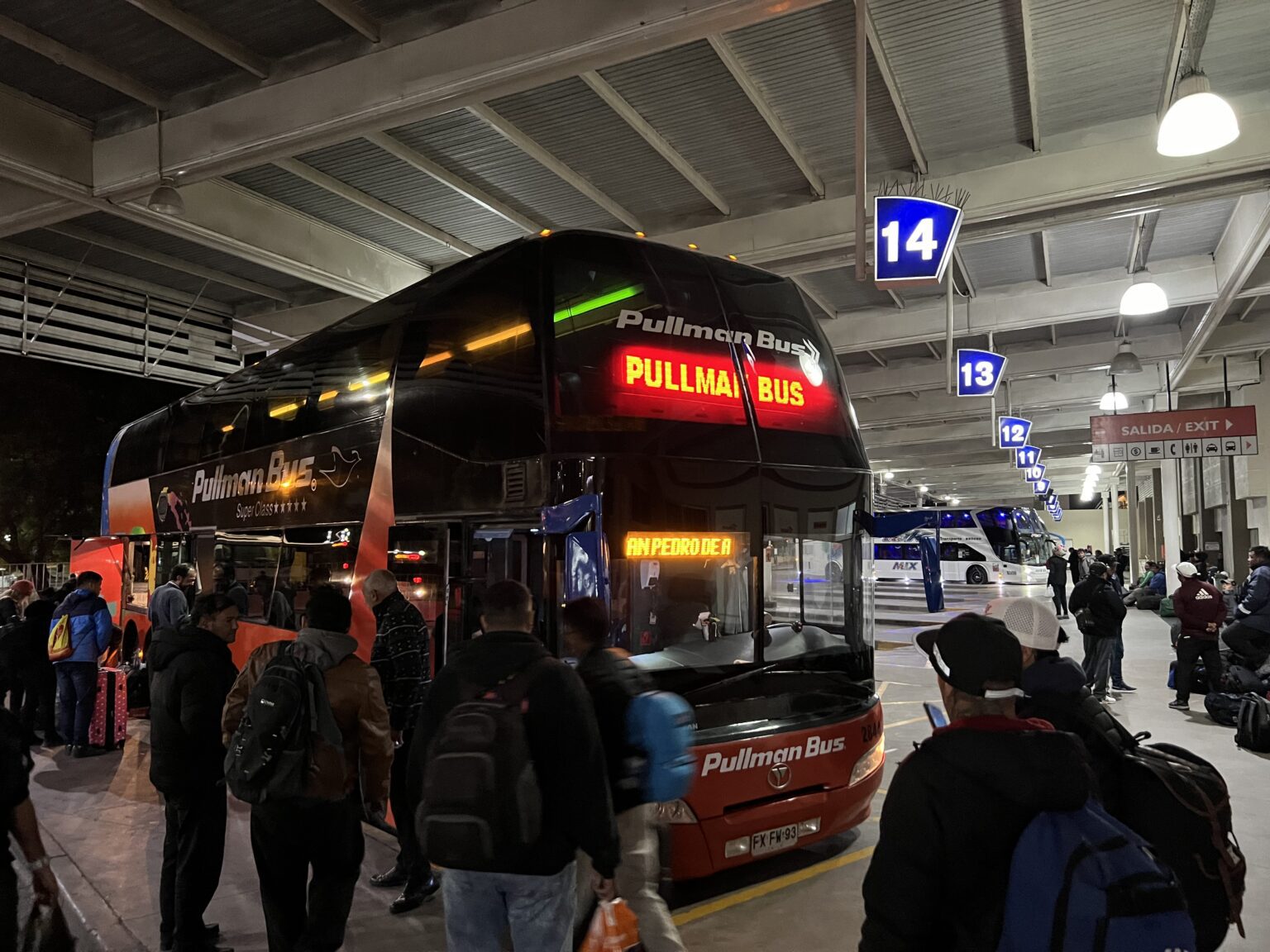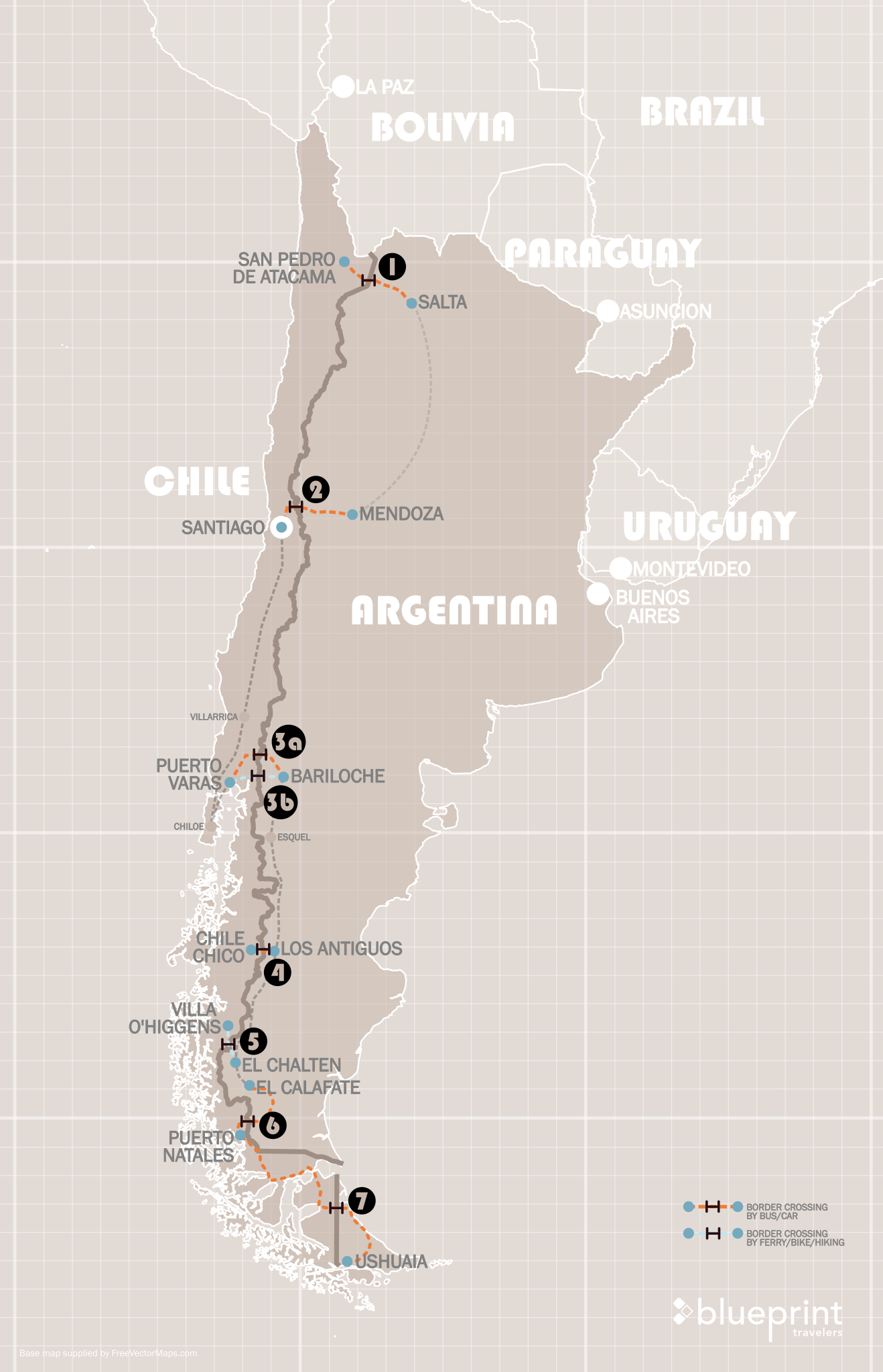Chile and Argentina are a backpacker’s dream. They are two countries that are incredibly friendly for traveling via bus. It is important to be prepared to cross the border between Chile and Argentina. This article is intended to be a resource for you whenever you are looking to cross anywhere north or south along this border.
What You Need to Know About Crossing Into Argentina or Into Chile
Before we get into the details of the individual border crossings, let’s talk about each of these countries’ border controls and customs requirements. This information also applies when entering these countries via airplane.
THE CHILE BORDER Control and customs process
Before traveling to Chile, look up the visa requirements for your country before arriving. Chile is relatively strict concerning its rules and what they allow into their country. You will need a valid passport that will not expire in the next 6 months. Before arriving at customs and border control, you will need to fill out a form, either physically or digitally (found here). If you are traveling by plane, the flight attendants will direct you with this. If you are traveling by bus or in a different way, the bus company will help you with the form or you will have to fill it out when you get to border control.
On this form, you will need to give your passport number and the address of your accommodation in Chile. You will also need to declare if you are carrying any food/animal products (they may not let you take this into the country depending on the product type). You will also need to let them know if you are carrying more than $10,000.
When you have successfully gone through border control (and before customs), the Chilean authority will provide you with a receipt-like paper with the letters “PDI” on the top. It is incredibly important that you keep this paper in a safe place. You will need this paper to leave the country or you will have to pay a fine. You may also need to provide this paper to any hotels that you are staying at. You will also get a stamp on your passport.
After border control, you will go through customs where they will scan all your bags. This is where they may search your bags and take away any items that they do not allow into the country. Now, you are free to explore Chile!
The argentina border control
The Argentina border control is very different from the Chilean one. There is no form that you need to fill out. However, you do still need to verify if you require a visa to enter the country. You will also need a valid passport that won’t expire in the next 6 months. When you get to border control, you will need to provide your passport and the address of your accommodations. The border control will take your photo. They may take this photo again when you are leaving the country. Unfortunately for all the passport stamp collectors, Argentina does not stamp a passport unless you have a visa.
The Main Tourist Points to Cross the Border Between Chile and Argentina
There are 7 main locations where travelers consider crossing the border via bus or other forms of transportation. Below, we go through each crossing and the important information you may need to cross successfully and seamlessly.
1
Cross the Border Between Salta and San Pedro De Atacama
Salta is the nexus of high Andean mountain adventures in Argentina. It is the place to visit different mountain towns with adobe homes that are surrounded by extraordinarily colorful mountains. You can read more about visiting Salta here.
Similarly, San Pedro de Atacama is the nexus for desert adventures in Chile. It is a small town full of tour groups that can take you on any adventure you can think of in the driest desert in the world.
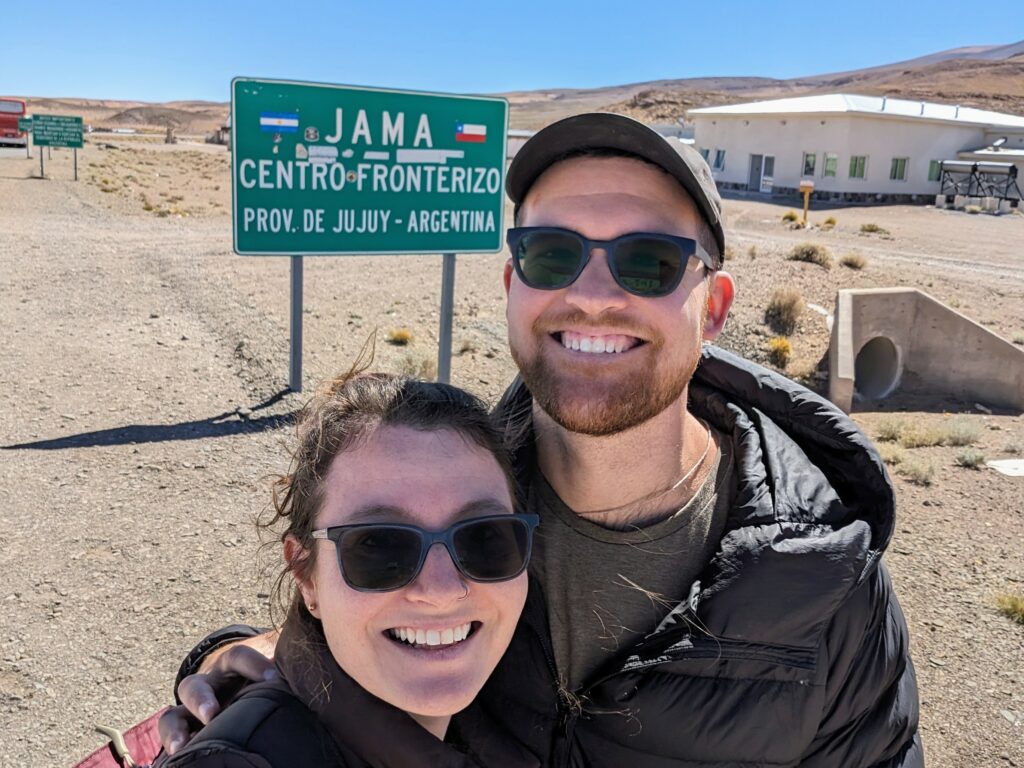
Jama Mountain Pass is the border crossing between these two towns. It is at 4,200 meters (13,800 feet) in elevation. You may be affected by the elevation change, so make sure you bring a lot of water, some food, and potentially coca leaves to lessen the effects of the altitude. The drive between these two towns is absolutely beautiful and will take you along volcanoes and salt flats.
2
Cross the Border Between Santiago and Mendoza
Santiago is the capital city of Chile and a large modern city. It is a strong hub for travel around Chile, including to a wine region, to Rapa Nui/Easter Island (you can read more about visiting that here), or to the Patagonia region (you can explore the Patagonia region of Chile here).
Mendoza is the main wine region of Argentina. It is an incredibly beautiful area to visit and indulge in wonderful wine, food, and adventure. Because it is close to Santiago, it is not uncommon to visit both regions, and traveling between the two by bus is a convenient and economical way to get between the two towns. You can read more about visiting Mendoza here.
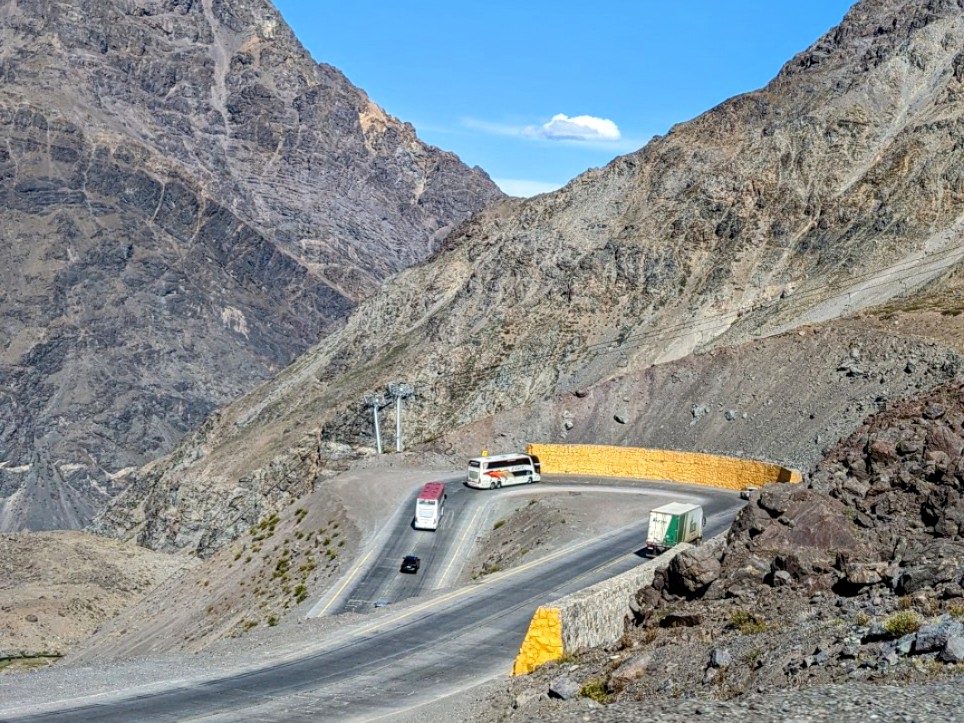
For the bus route, we had to change buses in the middle of our trip but the bus driver helped us navigate the change and the border crossing in general. The border crossing here is notorious for how long it could take to get through. It is a main hub for bus and truck transportation because Valparaiso (just south of Santiago) is a major port. It is important to allow for flexibility in your travel plans if you are going through this border.
3
Cross the Border Between Puerto Varas and Bariloche
Puerto Varas is located in the northern region of Chile’s Patagonia region. It is between a volcanic region (learn more here) and the island region of Chiloe (read more here).
Bariloche is one of the most popular towns to visit in Patagonia Argentina in the Lakes District of the region. It is a hub for adventure activities in Patagonia, including road trips, hiking, skiing, fishing, horseback riding, climbing, and more! You can read more about what to do in the Bariloche area here.
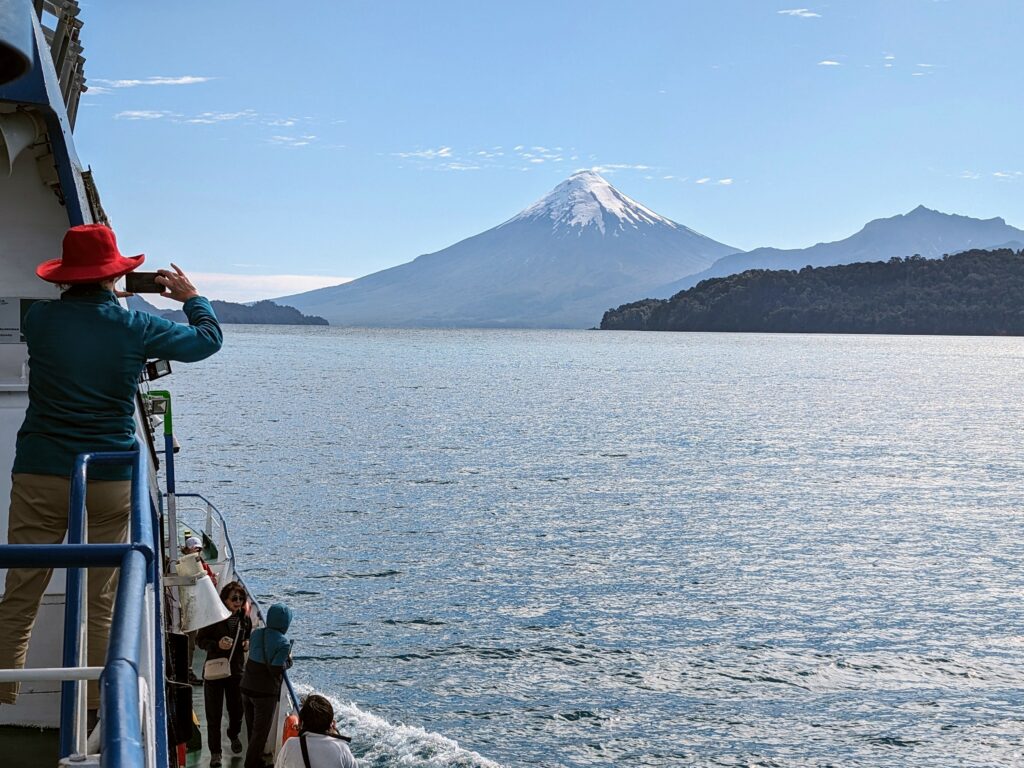
There are two ways to cross the border here. The first way is by taking a bus up and over the border. It is the most economical way to get between the two towns. However, if you want to take a little adventure and want to include an experience with your border crossing, then you can take 3 ferries and 4 buses to cross the border. This option is more expensive but it includes incredibly beautiful landscapes along the route. You will see beautiful lakes and volcanoes. It is truly an experience! You can reduce the cost of the trip by biking or hiking in particular areas. You can read more about this particular border crossing here.
4
Cross the Border Between Chile Chico and Los Antiguos
Between two hubs of Patagonia (the southern mountains and the northern lake areas), there is one place to cross the border: between the border towns of Chile Chico in Chile and Los Antiguos in Argentina. (We did not cross the border here but we did capture some information about this crossing.)
These two towns are not tourist hubs but are the two towns at the border between Chile and Argentina. You can take a bus from other towns in each country to these border towns to cross over. Unfortunately, there are no bus services that cross the border, unlike the other border crossings on this list. To cross, you will have to hire a taxi to take you to the border, go through the controls and customs, and hire another taxi on the other side. Otherwise, you can hike between the two towns, almost 14 kilometers or 8.7 miles. You may be able to hitchhike across or find illegitimate minibuses/vans that can help make the hike shorter. If you are thinking about crossing this border here, make sure to bring cash, preferably Chilean pesos or dollars.
5
Cross the Border Between Villa O'Higgins and El Chalten
Villa O’Higgins is a town that is connected to the Carretera Austral going north and the Patagonia Ice Fields to the south. Because of the challenges of getting to this town, as you’ll read below, we did not have the opportunity to visit it on this trip.
El Chalten is one of the icons of the Patagonia region and is an incredible hub for those who want to hike in some of the most famous mountains in the world. You can read more about some of the activities here.
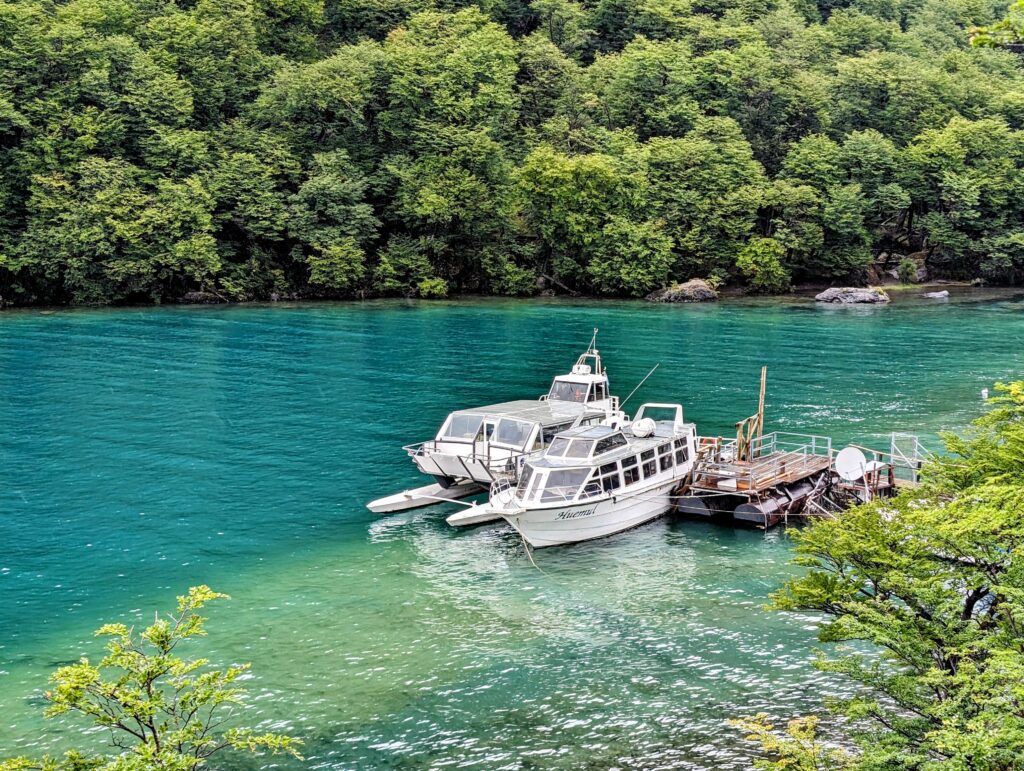
The border crossing between these two towns is much more obscure and challenging than some of the others on this list. If you are interested in an adventure through nature, then this is the crossing for you. I wrote this section as if I were traveling from Chile to Argentina. The steps are in reverse if traveling from Argentina to Chile.
Starting in Chile, Villa O’Higgins is located near a lake. You need to take a ferry to cross the lake. You should book this in advance as the ferry does not cross every day. Across the lake is the Chilean border office. You have the option to camp on the other side of the lake or continue with a hike to get to the other side of the Argentina/Chile border. The full hike is 22 kilometers (13.7 miles). This website has more details about this border crossing and some ways to minimize the hiking required, although hiking is inevitable. Finally, you will cross one more lake by ferry and arrive at the Argentine border office. You need to make sure to get stamped/checked in and out of Chile and Argentina through your travels.
6
Cross the Border Between Puerto Natales and El Calafate
Puerto Natales is the town closest to Torres del Paine, one of the most popular hiking spots in the world. It is from here that people hike the W or O treks and visit the national park. You can read more about the following:
The other main town that people talk about in Patagonia is El Calafate, the town closest to the Perito Moreno glacier, which you can visit and trek on. You can read more about our experience in this town here. It is very common for adventure travelers to go to both locations because they both have such stunning and unique landscapes.
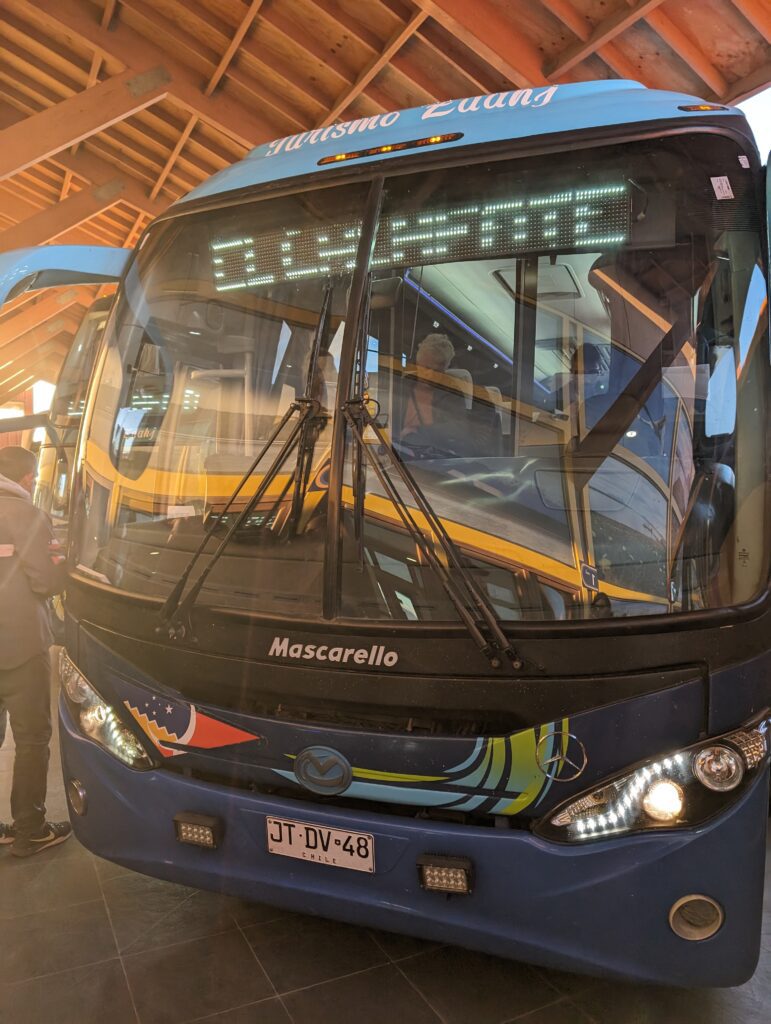
The border crossing between these two towns is very straight forward by bus and is incredibly routine, given the popularity of these two destinations. You can read a more detailed breakdown of the bus experience on this route here.
7
Cross the Border Between Ushuaia and Puerto Natales
We discussed Puerto Natales in the section above but if you skipped that section, here is a breakdown of the town. Puerto Natales is the town closest to Torres del Paine, one of the most popular hiking spots in the world. It is from here that people hike the W or O treks and visit the national park. You can read more about the following:
Ushuaia is the southernmost town in Argentina and a beautiful place to visit for some incredible landscapes in the national park of Tierra del Fuego. It is located on the Beagle Channel, from which many cruises leave (including to Antarctica). This channel can also be toured without going to Antarctica!
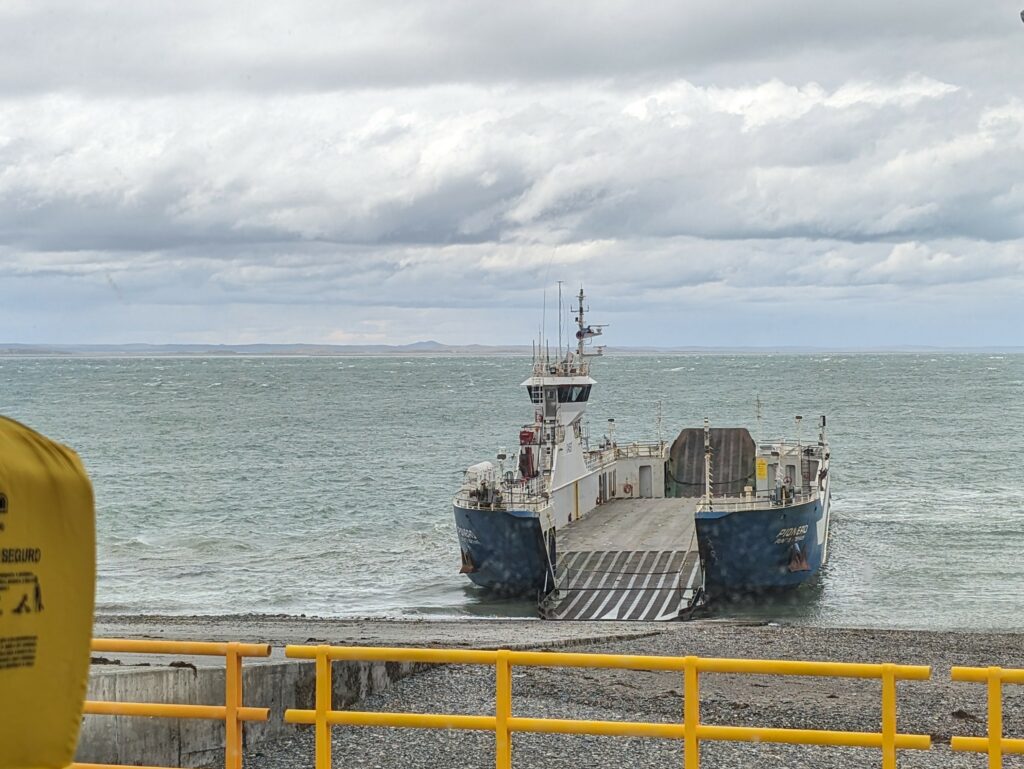
We started our adventure through Patagonia from the southernmost point. Many long-term adventurers in this area like to start or end here. To get between Puerto Natales and Ushuaia, Bus Sur is the only bus company that does the trek, which includes going through the border crossing and riding a ferry. You will have to get onto a new bus in Puerto Arenas (or stay overnight), but the overall trek between the two towns is easy and done by so many other travelers. You can read a more detailed breakdown of this transportation here.

